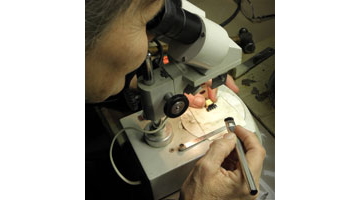
Common Concerns
During the past couple weeks, we have received a number of calls from prospective customers looking to make a change from their current transformer and electronic suppliers. These types of calls are not out of the ordinary.
What made these recent calls so interesting was the similarity in what people told us they were hoping to improve by sourcing products from STC. The number-one area of concern: Supplier Responsiveness.
Each caller was looking for a supplier that could offer quick turnaround of prototypes, the ability to make design changes—and ship updated designs—quickly, and the ability to answer questions without having to forward the questions on to an overseas manufacturer, and then wait for the answer.
Another common question is whether our products are made in the USA, and beyond that, whether any of our products are outsourced. Customers may be required to meet federal requirement, or may simply wish to avoid the hassle of overseas orders.
There are other concerns of course, such as quality of product, component lead times, and price. However, these matters are often addressed, at least in part, by overall responsiveness.
“Our turnaround time for prototypes and design changes is usually much better than the standard six to eight-week turnaround time for most other manufacturers,” says Design Engineer Les Vaughn. “Customers appreciate being able to call or email when they need an answer to a specific question about a part, to get the answer quickly—and to have confidence in the answer.”
Another common question is whether our products are made in the USA, and beyond that, whether any of our products are outsourced. Customers may be required to meet federal requirement, or may simply wish to avoid the hassle of overseas orders.
“One-hundred percent of our products are made in the USA,” says Vaughn. “Overseas orders typically require large shipment amounts, and then you have the long lead times for the shipment. Customers of STC just don’t have to concern themselves with those things.”
Vaughn continues, “Customers of STC also know that we’re ISO 9001 certified and have been for many years. So providing quality products, quick answers, and being responsive otherwise is just a part of what we do.”
Fullfilling Orders of All Types
In recent years, there has been a renewed focus on American-made products as well as products with higher amounts of American-made parts. This trend is part of a greater initiative to increase U.S. manufacturing, which is often referred to as re-shoring.
As this focus on US products continues to increase, STC has received an array of order types, from orders for 200,000-plus low-profile printed-circuit components to orders for just a few large 10-KVA three-phase power-supply components.
The ability to quickly transition between these diverse types of orders—while still producing quality components—has been an important strength for STC.
There are a number of attributes that enable STC to deliver on our promise of timeliness and quality. A few of these attributes include:
Production Staff: First and foremost, a capable and well-trained production staff is absolutely essential. Additionally, the ISO procedures used by STC provide the framework so our staff is able to build products that meet our strict quality requirements.
Equipment: The equipment used to manufacture smaller printed-circuit components is quite different than the equipment used for large three-phase transformers. STC has the necessary machinery to build components large, small, and everything in between.
Test Procedures: As with production, rigorous testing requires proficient staff and reliable test equipment. However, it also requires close attention to how tests are carried out. STC follows ISO test procedures for all shipped products.
STC Adds 8,000 Square Feet
STC, Incorporated announced today that it will be expanding its McLeansboro, Illinois facility. The industry-leading designer and manufacturer of printed circuit assemblies, transformers, and electronics products has purchased an 8,000 square foot structure and is in the process of renovating work space and upgrading communications capability within the building.
The additional space will be used primarily as office space for the Systems and Software group, which is responsible for hardware layout and design, software development and testing, and firmware development and testing.

